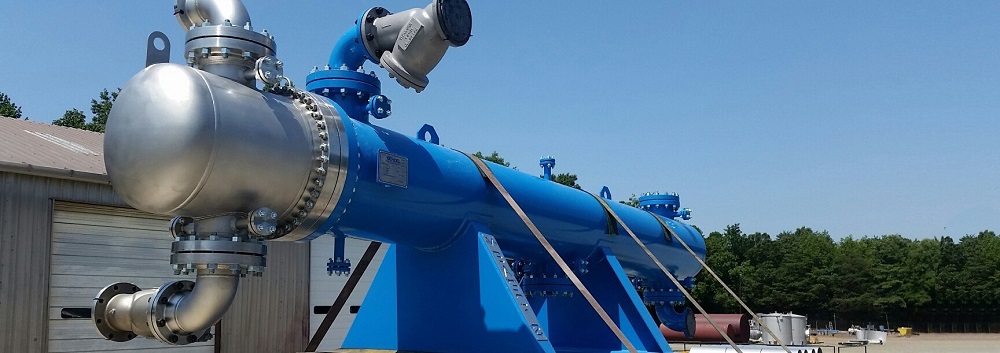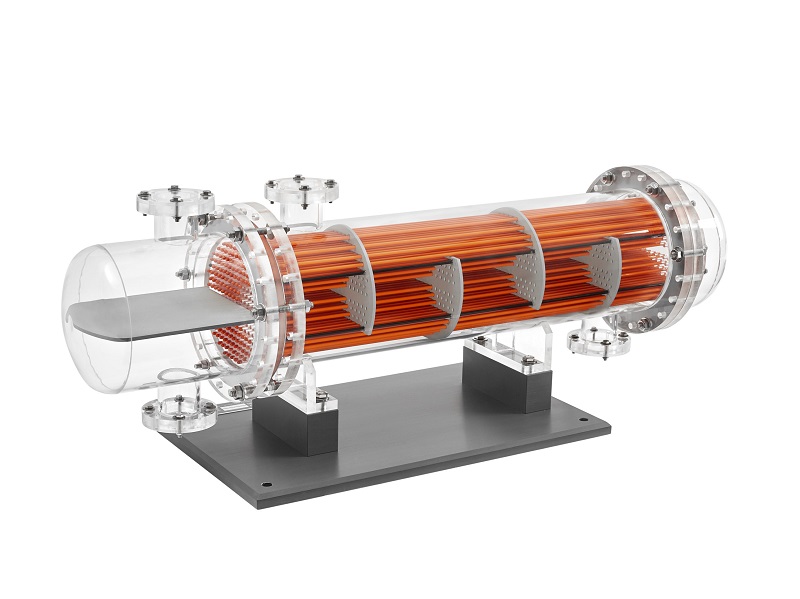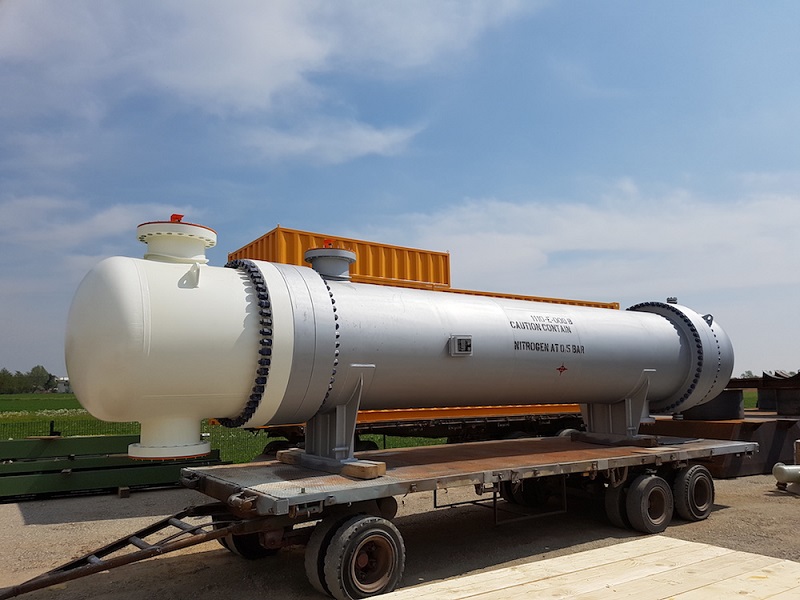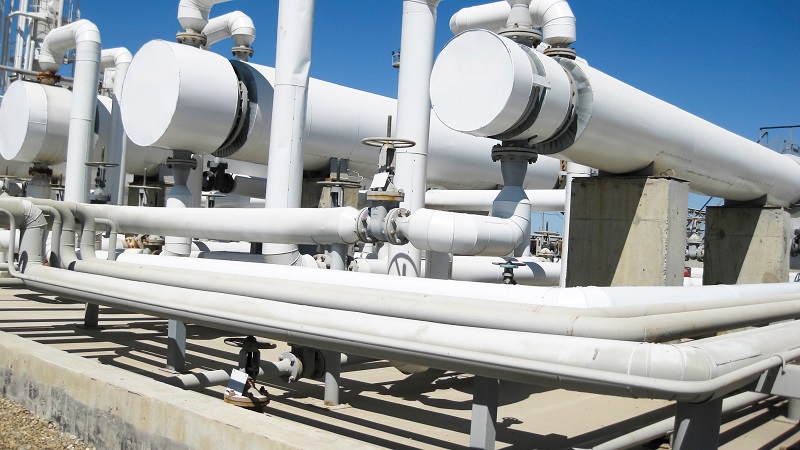Shell and tube exchangers are the most commonly used heat exchangers in process plants today. One of the main types of shell and tube heat exchangers is the floating head exchanger. This heat exchanger is unlike any shell and tube heat exchanger. It is one of the most used heat exchangers specially designed to be completely stress-free to promote longer equipment life and virtually no maintenance. In this article, we find the best answer to the question of what is floating head heat exchanger. Follow this new blog in Linquip to find out more about this type of heat exchanger.
What Is Floating Head Exchanger?
The floating head type heat exchanger is a type of shell and tube heat exchanger in which the tube sheet assembly is independent and free to move within the shell or the shell cover. This exchanger is widely used for the service where the temperature is high between the shell and tube bundle that creates expansion issues. The floating head exchanger is the best heat exchanger in terms of efficiency and maintenance but naturally comes at a higher cost.
This heat exchanger eliminates heat exchanger failure for industry-leading equipment life without any maintenance. Floating head heat exchangers offer unprecedented resistance to the thermal stress and fatigue common in every other type of shell and tube heat exchanger. Special designs of this heat exchanger are available for particulate ladened air streams, corrosive applications, high temperatures and high pressures.
With high reliability and wide adaptability, the floating head heat exchanger has accumulated a wealth of experience during the long-term using process and promoted its development constantly. So far, among all kinds of heat exchangers, the floating head heat exchanger is still in a leading position.
This type of heat exchanger can be applied as solutions including:
- High thermal efficiencies
- Corrosive airstreams
- Cooling applications
- High Temperatures
Parts
To answer the question of what is floating head heat exchanger, first, let us see what its different parts are. As shown in the name of it, in this design, one end of the tube sheet is fixed to the shell, while the other one can “float” freely inside the shell. It also consists of a removable tube bundle made up of straight tubes, tube sheets, tie rods, and baffles.
Depending on the weight and length of the bundle, there may also be slides or wheel assemblies to make removal of the tube bundle from the heat exchanger shell easier. The floating tube sheet must be enclosed by a floating head cover. In this equipment, gasket joints are very large, therefore it is costly. Generally, both the shell and tube bundle are free of expansion, this permits no thermal stress is produced between the shell and tube bundle when the temperature difference of the two medium is large.
Working Principle
The working principle of this type of heat exchanger is simple. When the tube side allowable pressure drop is considerably low, and fluid cannot be put in the shell side, a floating head heat exchanger is recommended. The tube-side allowable pressure drop becomes the limiting factor in determining the length and number of tubes, and the shellside pressure drop is maximized within that size by a baffle arrangement that will achieve the necessary performance.
Types
According to different requirements, the floating head on a floating head heat exchanger can be designed into various types. To reduce thermal stresses and provide a means to remove the tube bundle for cleaning, several floating head designs have been established. Here are four basic kinds of floating head heat exchangers:
-
Split Back Ring Type (Type S)
Split back ring type unit is more commonly used in industries. In this type of construction, the floating head is fitted to the tube sheet which is away from the channel. The floating head is held in position by a split backing ring so that dismantling is possible. The floating tube sheet diameter is kept slightly smaller than the inner shell diameter so that the entire tube bundle can be removed from the channel end.
The shell is closed by a bonnet on the floating head side. The split-ring type also has the “pull-through” feature associated with the pull-through bundle type of floating head heat exchanger. It is recommended for high-pressure, non-hazardous process fluids.
Pros
- High pressure is possible.
- Differential expansion is provided by the floating head.
- The shell and tube mechanical cleaning is possible.
- The tube bundle is removable.
Cons
- Failure of the gasket is not externally visible, therefore leakage might go undetected for some time.
-
Pull through bundle type (TypeT)
In the pull-through bundle type, one of the tube sheets is designed to be small so that it may be pulled through the shell. This allows access to the inside of the shell so that it may be inspected, repaired, and cleaned. However, this design has fewer tubes than the others, which means that it transfers heat more slowly. There are fewer tubes to accommodate the bonnet flange and bolt circle.
Pros
- The tube bundle is removable. (Also individual tubes)
- Differential expansion is provided by the floating head.
- Shell and tube side mechanical cleaning is possible.
- Double tube sheets are possible.
Cons
- The seal is not externally visible; therefore leakage might be undetected for some time.
- This type will tend to be more expensive than other types.
-
Outside packed Lantern ring type (Type W)
In this type, the shell side and tube side streams are individually sealed by individual packing and are separated by a lantern ring. This is the lowest cost of the floating head designs. This type is recommended for low pressure, low temperature, and non-hazardous fluids.
Pros
- The differential expansion between tubes is possible thru the floating head design, therefore eliminates the need for an expansion joint.
- The tube bundle is removable. (Also individual tubes)
- Tube side mechanical cleaning is possible.
- Shell side mechanical cleaning is possible.
Cons
- A maximum of only two tube side passes is possible.
- The shell and tube side leakage is possible.
- Maximum temperatures of 375 degrees F and a maximum pressure of 300 psi limit the usage of these units at higher pressure and temperature.
-
Outside packed stuffing box type (Type P)
In this type, a skirt attached to the floating tube sheet passes through the back end of the shell. The space between the skirt and the shell is sealed by several layers of packing and packing gland. Unlike the outside-packed lantern ring design, it includes four tubes and not two, making it faster at transferring heat from medium to medium. It is recommended for low pressure, low-temperature non-hazardous fluids.
Pros
- High pressure on the tube side is possible.
- The tube bundle is removable. (Also individual tubes)
- Shell and tube mechanical cleaning is possible.
- More than two tube passes are possible to utilize the allowable pressure drop.
- Packing failure is externally visible under operation.
- A double tube sheet is possible.
- Differential expansion is provided by the packing.
Cons
- Hazardous material should not be used on the shell side because of the possible leakage.
- Packing will tend to limit shell fluids to temperatures below 300 degrees F and pressure below 150 psi.
- This type lacks positive sealing and thus is also prone to leakage.
Advantages
- No temperature limit between the two mediums
- Can operate under high temperature and high pressure, the average temperature is less than or equal to 450℃,and pressure is less than or equal to 6.4MPa.
- Easy to clean and inspection
- High reliability and wide adaptability
- Suitable for the serious scaling occasion
- Suitable for the easy corrosion occasion
- Suitable for the dirty fluid application, due to ease of cleaning
- The tube bundle can be removed for inspection.
- Possible mechanical cleaning of the outer surface of tubes
- Since tubes are straight, individual tubes can be replaced.
- Expansion of tube and shell is not a problem
- The inside tube surface can be cleaned without removing the tube bundle.
- No limitation on the number of tube side passes
Limitations
- It is costly compared to the other heat exchangers
- A large number of gasket joints
- Leakage may be a problem, unlike the U tube type heat exchanger due to the floating head.
- Installed only horizontally
- Packing materials produce limits on design pressure and temperature.
- Tubes cannot expand independently so that huge thermal shock applications should be avoided.
- To provide the floating-head cover it is necessary to bolt it to the tube sheet. The bolt circle requires the use of space where it would be possible to place a large number of tubes.
Applications
This type of heat exchanger is widely used in different industries such as petrochemical plants and chemical industries. Some examples of this heat exchanger are as follow:
- General industrial applications requiring frequent cleaning
- Chemical processing applications for toxic fluids
- Hydrocarbon fluid condensers
- Special gas aftercoolers and intercoolers
- Air pollution control systems,
- Secondary heat recovery solutions for returning heat to ovens, dryers, kilns,
- Building heating
- OEM energy recovery applications
So, there you have every single fact to the question of what is floating head heat exchanger. If you enjoyed this article in Linquip, let us know by leaving a reply in the comment section. Is there any question we can help you through? Feel free to sign up on our website to get the most professional advice from our experts.






